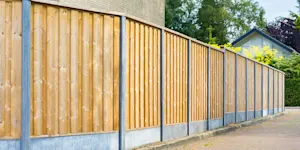What Makes This Word Tick
"Imbricate" is one of those words that, when you say it, feels like a little piece of magic. Sure, it sounds a bit like something you might use in a parlor trick, but it actually describes how things overlap each other, like shingles on a roof. Once you know it, you'll start seeing "imbrication" everywhere, especially in nature, like in pine cones or fish scales.
If Imbricate Were a Person…
Imagine Imbricate as the meticulous friend in your knitting circle. This person loves order, ensuring each stitch aligns perfectly on top of the last. When setting the table for a dinner party, they overlap the napkins just so. Imbricate appreciates harmony and balance in everything.
How This Word Has Changed Over Time
Though "imbricate" maintains its original essence of overlapping arrangement, it has expanded beyond its roots in botany and zoology. Historical texts often discuss imbricate patterns in architecture and design. Today, it's also used metaphorically to describe concepts and ideas that are layered.
Old Sayings and Proverbs That Use Imbricate
While you won’t find "imbricate" in old sayings directly, the wisdom it embodies shows up: "May your lives be like a well-shingled roof." This hypothetical proverb hints at a life that's securely and neatly layered, much like the imbricate mission.
Surprising Facts About Imbricate
Here's a fun tidbit: "imbricate" comes from the Latin word "imbricatus," meaning "covered with tiles." It makes sense, doesn’t it? Think Roman villas and their lovely overlapping roof tiles standing stoic through history. Time-tested imbrication at its best!
Out and About With This Word
You'll encounter "imbricate" quite often in botanical gardens and design museums. It's a favorite among plant enthusiasts and architects, alike. Next time you're there, impress a guide by casually dropping, "The leaf pattern is imbricated, isn’t it?"
Pop Culture Moments Where Imbricate Was Used
While this word doesn’t splash across headlines often, it might creep into documentary scripts about nature. Occasionally, it lends its elegance to design magazine features discussing layout harmony or architectural tours showcasing historic roofs.
The Word in Literature
"Imbricate" weaves itself through literature in subtle strands, often used to describe nature’s intricate beauty or an artist’s carefully constructed imagery. It fits naturally into poetry focused on the structural precision of the world.
Moments in History with Imbricate
Consider the mastery of ancient Roman architecture or the artful arrangements in medieval manuscript marginalia. Though "imbricate" wasn’t named directly, its principle guided many creations. It might aptly describe how cultures were built, layer by layer.
This Word Around the World
In languages with strong Latin roots, variations of "imbricate" echo similar imagery of overlap and layering. Though not universally recognized in casual conversation, in design and science, its understanding creates a common ground.
Where Does It Come From?
You can thank the Latin word "imbrex" (meaning "rain tile") for this gem. The concept of overlapping to protect or decorate has been preserved through the centuries—an enduring tribute to the elegance of structure.
How People Misuse This Word
It’s not too common to misuse "imbricate," but it might be confused with "intricate." The latter is about detail complexity, while "imbricate" focuses more on the physical or conceptual overlap.
Words It’s Often Confused With
Intricate: Often mistaken due to its similar sound, "intricate" means complex with lots of fine detail.
Interlock: Similar in overlapping, but interlock suggests a more meshed or woven interaction.
Adjacent: Though related to positioning, "adjacent" is more about proximity without overlap.
Additional Synonyms and Antonyms
Synonyms for "imbricate" include "overlapping" and "layered," while its antonyms could be "separated" or "detached," highlighting its core focus on closeness and connection.
Want to Try It Out in a Sentence?
Consider this: "The designer chose an imbricate pattern for the tile submission, resulting in a floor that felt both cohesive and sophisticated." Watch your friends marvel at your architectural vocabulary prowess!
















